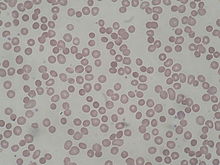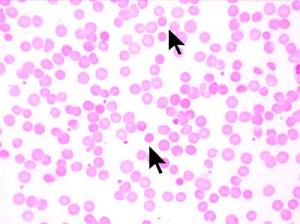Spherocytosis is an unusual genetic disorder that affects a sizeable population around the world. Read and know all about this potentially life-threatening condition, including its possible causes, symptoms, diagnosis and treatment options.
Spherocytosis Definition
Page Contents
- 1 Spherocytosis Definition
- 2 Spherocytosis ICD9 Code
- 3 Spherocytosis Incidence
- 4 Spherocytosis Causes
- 5 Spherocytosis Risk Factors
- 6 Spherocytosis and Heredity
- 7 Spherocytosis Symptoms
- 8 Spherocytosis Diagnosis
- 9 Spherocytosis Differential Diagnosis
- 10 Spherocytosis Treatment
- 11 Spherocytosis Prognosis
- 12 Spherocytosis Prevention
- 13 Spherocytosis Complications
- 14 Spherocytosis in Children
- 15 Spherocytosis Support Groups
- 16 Spherocytosis Pictures
Spherocytosis is the name given to an inherited blood disease in which the red blood cells or RBCs are abnormal in shape. Due to a reduction in the supply of RBCs, there is an elevation in the rate of degeneration and anemia for patients.
The disorder is also referred to by other names like:
- Hereditary Spherocytosis
- Congenital Spherocytic Anemia
The condition is sometimes also referred to as “Cell membrane disorder”, as it includes errors in the proteins that are used to manufacture the membrane of RBCs.
Hereditary Spherocytosis is a specific form of Spherocytosis although the term “Spherocytosis” is almost always used to indicate Hereditary Spherocytosis. The term “Non-Hereditary Spherocytosis” is used occasionally although only rarely.
Spherocytosis ICD9 Code
The ICD9 Code for Hereditary Spherocytosis is 282.0.
Spherocytosis Incidence
Hereditary Spherocytosis affects around one in every 2,000 people of Northern European origin. The condition is the most common cause of inherited anemia in this population. In individuals of other ethnic backgrounds, the prevalence of the disease is not known although it is much less common. Both recessive and dominant forms of this condition exist. A substantial number of this disease may occur due to new mutations without a family history of the condition.
Spherocytosis Causes
This is a hereditary disorder that occurs as a result of genes that are inherited from parents. Those with a family history of the disease may pass on the defective genes responsible for Spherocytosis to their kids, even if they do not themselves suffer from the condition. Although it is related with a particular gene like other genetic disorders, a complicated series of interactions may be involved. People may have harmful genes that can lead to blood disorders without patients themselves being aware. In some cases, these genes combine in abnormal ways and give rise to acute conditions.
Spherocytosis Risk Factors
The risk factors for this condition have not yet been properly identified. However, having a family member with this condition can increase your susceptibility to this disease. The condition is also most common in individuals of North European origin although it has been found to arise in people of all races.
Spherocytosis and Heredity
In around 75% of all cases, Hereditary Spherocytosis is inherited by affected individuals in an autosomal dominant pattern. This indicates that a single copy of the changed gene in each cell is enough to result in the occurrence of the disease. In certain cases, a sufferer inherits the mutated gene from one affected parent. Other cases of Spherocytosis arise from new mutations in the altered gene and develop in people without any family history of the disease.
The disorder may also be inherited by affected individuals in an autosomal recessive pattern. This indicates that both copies of the altered gene in each cell consist of mutations. Each parent of a person with an autosomal recessive disorder carry one copy of the altered gene. Typically, however, they do not exhibit any symptoms of the disease.
Spherocytosis Symptoms
The cases of this condition may be very mild in nature. The disease may exhibit with minor symptoms or very acute, with severe signs that surface quickly. The symptoms may arise after some forms of infections. Acute cases of the condition may be detected in childhood. However, those with moderate symptoms may not be detected until in the days of adulthood.
The typical signs and symptoms of this disorder include:
- Fatigue
- Jaundice
- Pallor
- Gallstones
- Weakness
- Hemolytic anemia
- Shortness of breath
- Irritability and moodiness (in children)
In healthy people, the RBCs are usually shaped similar to a disc having elevated edges. The shape of these cells is comparable to that of a doughnut with a filled middle. In Spherocytosis patients, the RBCs are spherical in shape and their surface area is small which make them susceptible to rupture.
When the spleen comes in contact with these RBCs, it assumes the cells to be diseased and goes on to destroy them. This can give rise to anemia as the body fails to manufacture RBCs faster than the rate of destruction of the cells. Those suffering from this disorder can suffer from enlarged spleen and jaundice. Due to anemia, they may also feel weak and fatigued. If the amount of red blood cells decreases enough, patients can enter a state of medical crisis.
Spherocytosis Diagnosis
The diagnosis of the disorder involves asking patients about their medical history and the symptoms. Physicians are likely to perform a physical examination.
The diagnostic tests for this disorder include the following:
- Blood tests
- Liver function tests
- Examination of the spleen
- Osmotic and incubated fragility tests to detect Hereditary spherocytosis
- Coombs’ Test, an antiglobulin test to examine antibodies of red blood cell
Spherocytosis is a dominant trait. It can manifest in various degrees in intensity, based on the precise combination of genes inherited by an individual.
Spherocytosis Differential Diagnosis
During the differential diagnosis for this disease, physicians must be able to isolate the symptoms of Spherocytosis from those of similar disorders such as:
- Liver disease
- Zinc toxicity
- Hypersplenism
- Heinz body anaemia
- Clostridial septicaemia
- Severe hypophosphataemia
- ABO incompatibility (in neonates)
- Haemolytic transfusion reactions
- Thermal injury, antioxidant injury or snake envenoming
- Autoimmune, microangiopathic or macroangiopathic haemolytic anaemia
Doctors should make sure that patients are not suffering from any of the above mentioned disorders.
Spherocytosis Treatment
It is impossible to cure this condition completely. This is due to the fact that Spherocytosis occurs due to an innate genetic abnormality with the coding used by the body in the production of red blood cells. However, treatment options are available for this disease that can help control its signs and symptoms. The curative measures include:
Folic Acid Supplementation
Daily consumption of 1 mg Folic acid as well as blood transfusion is recommended for patients suffering from acute stages of anemia.
Surgery
The problem of anemia can be cured by surgical removal of the spleen (Splenectomy), which begins to destroy the red blood cells. The abnormal shape of the RBCs may persist although the blood cells are no longer destroyed within the spleen.
At present, pneumococcal, meningococcal and Haemophilus vaccines are administered a few weeks prior to Splenectomy. Following operation, the administration of the penicillin Prophylaxis is recommended for a lifetime to prevent harmful infections. The surgery is not recommended for children under the age of five. There is a risk of serious and potentially fatal infections for an entire lifetime. Due to this reason, physicians may recommend waiting for spleen removal for as long as possible. Doctors stress that the spleen should be taken out only if there is a prominent medical necessity for the removal of the organ.
Treatment can also include dietary supplements. It is best to consult with doctor about the proper treatment plan for this disorder.
Spherocytosis Prognosis
Following surgery, patients should experience a progress in their health and resolution of the symptoms.
Spherocytosis Prevention
As this is an inherited disease, it is impossible to prevent its occurrence. However, regular screening and early treatment of high-risk individuals can help avoid the risk of complications of the condition. Patients with a family history of the disorder may find assistance by consulting gene therapists.
Spherocytosis Complications
The complications associated with this disease include:
- Gallstones
- Gallbladder disease
- Haemolytic crises, which can occur as a response to viral infections
- Aplastic crises, which may occur after viral bone marrow suppression and may be fatal in nature
- Megaloblastic crises, which may occur due to folate deficiency but are rare in occurence
Around 3-5% of Hereditary Spherocytosis sufferers suffer from acute disorders that need blood transfusions on a regular basis.
Spherocytosis in Children
In some children, the signs and symptoms of this disorder are minor in nature. For the majority of kids, however, the condition is more severe. The common signs and symptoms of this disease include:
- Rapid heartbeat
- Feeling dizzy or lightheaded
- Fatigue or irritable feeling
- Pale skin, nail beds or lips as compared to their normal color
Children affected by this disorder are also highly susceptible to gallstones as their bodies produce extra amounts of the bile pigment known as Bilirubin. Bile is the pigment manufactured in the liver and stored in the organ known as gallbladder. The gallbladder squeezes this pigment into the intestine to aid in digestion of fats. If the substances within the bile harden, small stony objects (known as gallstones) can develop. These stones may result in infection, pain or other difficulties if they get stuck within the tubular structures that lead out of the gallbladder.
Spherocytosis Support Groups
Patients and their family members can seek assistance and necessary information from various support groups that provide guidance to Spherocytosis sufferers. The support groups also include a number of online forums that have recently come into existence.
Spherocytosis Pictures
Check out the following images that show the condition of individuals affected by this disorder.
Picture 1 – Spherocytosis
Picture 2 – Spherocytosis Image
If you suspect yourself or anyone in your family to be exhibiting the signs and symptoms of Spherocytosis, get in touch with a doctor on an immediate basis and opt for earlier diagnosis and treatment. When detected and cured early, patients of the condition show a good prognosis and the recovery time is much lesser in duration.
References:
http://www.beliefnet.com/healthandhealing/getcontent.aspx?cid=222673
http://www.wisegeek.com/what-is-spherocytosis.htm
http://pediatrics.med.nyu.edu/conditions-we-treat/conditions/spherocytosis
http://en.wikipedia.org/wiki/Spherocytosis


